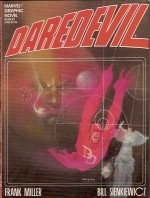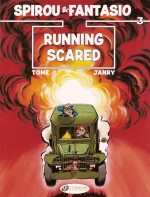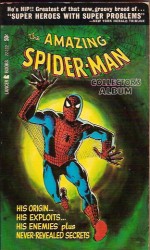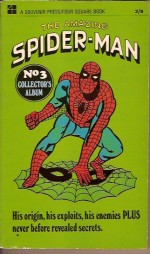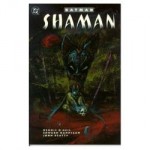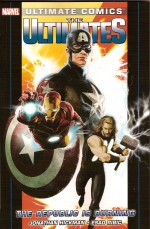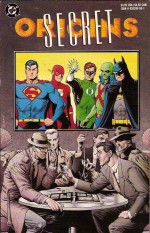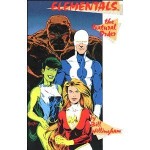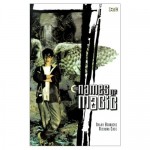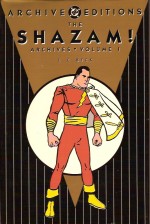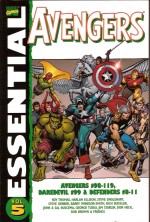
By Roy Thomas, Steve Englehart, Barry Windsor-Smith, Rich Buckler, Don Heck, Bob Brown, Sal Buscema & various (Marvel)
ISBN: 978-0-7851-2087-4
The Avengers have always proved that putting all one’s star eggs in one single basket pays off big-time: even when all Marvel’s all-stars such as Thor, Captain America and Iron Man are absent, it merely allows the team’s lesser lights to shine more brightly.
Of course all the founding stars regularly featured due to the rotating, open door policy which means that most issues includes somebody’s fave-rave – and the boldly grand-scale impressive stories and artwork are no hindrance either.
This monolithic and monumental fifth tome, collecting the absolute best of the Mighty Avengers‘ world-saving exploits (presenting in crisp, stylish black and white the astounding contents of issues #98-119 of their monthly comic book between April 1972 and February 1974, plus crossover appearances in Daredevil #99 and The Defenders #8-11), saw scripter extraordinaire Roy Thomas hand over the reins to an even more imaginative and groundbreaking author who took the team to dizzying new imaginative and dramatic heights…
Opening this epochal tome is ‘Let Slip the Dogs of War’ from Avengers #98, by Thomas, Barry Windsor-Smith & Sal Buscema, which finds harried heroes Captain America, Iron Man, Vision, Quicksilver, Scarlet Witch and Thor, all survivors of the recently concluded Kree-Skrull War, debating the loss of their comrade Goliath, missing in action since he explosively stopped an alien warship from nuking Earth…
As the Thunderer headed for Asgard and its magic scrying mirrors, the fruitless debate was curtailed when war-mongering demagogue Mr. Tallon began inciting riot in the streets of New York. The gathered crowds attacked the Avengers when they tried to quell the unrest and it was soon evident that the war-hawk had supernatural assistance… and in the dimensional void the Thunder God found all access to the Immortal Realms had been cut off…
By the time Thor returned to Earth his comrades had been bewitched too. Joining with the seemingly immune Vision in a last-ditch, hopeless battle, he fought their best friends until the tide was turned by a perfectly aimed arrow… heralding the return of Goliath to his original Hawkeye identity.
Moreover he had with him another Avenger: an amnesiac Hercules, Prince of Power, whose only certain knowledge was that Earth and Asgard were doomed…
‘…They First Make Mad!’ (inked by Tom Sutton) extended the epic as the Avengers called on all their resources to cure Hercules and decipher his cryptic warning whilst the World’s leaders seemed determined to hurl the planet into atomic Armageddon.
As Hawkeye revealed his miraculous escape from death in space and how he found Hercules the call went out, summoning every hero who had ever been an Avenger. Suddenly two Grecian Titans materialised to trounce the team, dragging the Prince of Power back to Olympus…
The epic concluded in the staggeringly beautiful anniversary 100th issue ‘Whatever Gods There Be!’ (inked by Smith, Joe Sinnott & Syd Shores) as thirteen Avengers – including even the scurrilous Swordsman and blockbusting Hulk – invaded the home of the Gods to discover old enemy the Enchantress and war god Ares behind the entire malignant plot…
With the supernatural wonderment concluded new penciller Rich Buckler – doing his best Neal Adams impersonation – took over the art, limning a Harlan Ellison/Roy Thomas tale, inked by Dan Adkins.
‘Five Dooms to Save Tomorrow!’ was based on an Ellison novella from 1964 and found the Avengers battling Leonard Tippit, an ordinary man granted incredible power so that he could murder five innocent humans beings whose innocuous continued existence nevertheless threatened Earth’s future.
Determined to stop him whatever the ultimate consequences, the murky moral quandary tested the Avengers to their utmost, but they were on firmer, more familiar ground in #102 when the Grim Reaper returned, offering to place the Vision’s consciousness in a human body in return for the android’s aid in ‘What to Do Till the Sentinels Come!’ (Thomas, Buckler & Sinnott) as the mutant hunting robots kidnapped the Scarlet Witch and attempted to eradicate the threat of Homo Superior forever…
The budding romance between the Witch and the Vision revealed tensions and bigotries in the most unexpected places as the cataclysmic tale continued with ‘The Sentinels are Alive and Well!’ with the team searching the globe for the monstrous mechanical marauders before being captured whilst invading their Australian Outback hive. The tale concluded in ‘With a Bang… and a Whimper!’ as the assembled heroes thwarted the robots’ intention to sterilise humanity – but only at the cost of two heroes’ lives…
The grieving Scarlet Witch took centre stage in #105 as ‘In the Beginning was… the World Within!’ (by new scripter Steve Englehart, John Buscema & Jim Mooney) found the team travelling to South America and encountering cavemen mutants from the lost world known as the Savage Land, after which the Avengers discovered ‘A Traitor Stalks Among Us!’ (illustrated by Buckler, George Tuska & Dave Cockrum) as the revelation that perennial sidekick Rick Jones had become atomically bonded to alien hero Captain Marvel triggered a painful flashback in the memory-blocked Captain America, and an old foe turned the team against itself.
Avengers #107 revealed ‘The Master Plan of the Space Phantom!’ (Jim Starlin, Tuska & Cockrum) and his complex and sinister alliance with the Grim Reaper as the love-sick Vision finally accepted the offer of a human body.
Unfortunately, the corpus on offer was the Star-Spangled Avenger’s…
‘Check… and Mate!’, illustrated by veteran Avenger artist Don Heck and inkers Cockrum & Sinnott, wrapped up the intriguing saga in spectacular fashion as an army of Avengers thrashed the Phantom, the Reaper and the hordes of Hydra as well but the true climax was the Vision and Witch’s final acknowledgement of their love for each other.
The announcement provoked a storm of trouble…
In #109 Hawkeye, who’d always carried a torch for the beautiful Wanda, quit the team in a dudgeon. ‘The Measure of a Man!’ (Heck & Frank McLaughlin) found the heartsick archer duped by billionaire businessman Champion and almost causing the complete destruction of California before wising up and saving the day, after which the depleted team of Captain America, Thor, Iron Man, Scarlet Witch, Vision and Black Panther investigated the disappearance of mutant heroes the X-Men and were thoroughly beaten by an old enemy with a new power.
‘… And Now Magneto!’ (Englehart, Heck, Frank Giacoia & Mike Esposito) ended with half the team brainwashed captives of the master-villain and the remaining crusaders desperately searching for new allies whilst in San Francisco and the crossover Daredevil and the Black Widow #99 (May 1973, by Steve Gerber, Sam Kweskin & Syd Shores) The Mark of Hawkeye!’ found Natasha Romanoff’s old boyfriend fetch up on the Widow’s doorstep, determined to reclaim her, culminating in the Archer’s sound and well-deserved thrashing.
When the last Avengers arrived, asking him to return and assist he refused, but DD and the Widow didn’t…
The story resumed in ‘With Two Beside Them!’ (Englehart, Heck & Esposito) saw the West Coast vigilantes successfully help the ragtag heroes rescue the X-Men and Avengers enslaved by the malevolent Magneto. With the action over, Daredevil returned to California but the Black Widow chose to stay with the World’s Mightiest Heroes…
Avengers #111 introduced a new supernatural menace in ‘The Lion God Lives!’ (by Heck & Frank Bolle) wherein a rival African deity sought to destroy the human Avatar of his great rival The Panther God. As the Black Panther and his valiant comrades tackled that threat in the wings an erstwhile ally and enemy and his exotic paramour made their own plans for the team…
Prejudice was the theme of #113’s ‘Your Young Men Shall Slay Visions!’ (Bob Brown & Bolle) as a horde of fundamentalist bigots offended by the “unnatural love†of Wanda and the Vision turned themselves into human bombs to destroy the sinful, unholy couple whilst the ‘Night of the Swordsman’ in #114 (Brown & Esposito) formally introduced the reformed swashbuckler and the enigmatic psychic martial artist Mantis to the team just in time to thwart the Lion God’s latest scheme
One of author Englehart’s other assignments was the anti-hero team The Defenders and since issue #4 he had been carefully putting players in place for a hugely ambitious cross-over experiment: one that would turn the comics industry on its head.
The classic confrontation finally commenced in Avengers #115 with a lead story ‘Below Us the Battle!’ (Brown & Esposito) wherein the still-understaffed heroes travelled to England and the castle of the Black Knight, only to encounter mystic resistance, a troglodytic race of scavengers and a comrade long missing…
The issue also contained a little prologue, ‘Alliance Most Foul!’, which saw other-dimensional Dark Lord Dormammu and Asgardian god of Evil Loki united to search for an ultimate weapon which would give them ultimate victory against all their foes.
This despotic duo would trick the Defenders into securing the six component parts by “revealing†that the reconstructed Evil Eye could restore the Black Knight – who had been turned to stone by the Enchantress months previously – a plan that began in a similar prologue at the end of Defenders #8…
‘Deception’ (Englehart, Sal Buscema & Esposito) was the first chapter in ‘The Avengers/Defenders Clash’ as a message from the spirit of the Black Knight was intercepted by the twin gods of evil, leading directly to ‘Betrayal!’ in Avengers #116, wherein the Avengers, hunting for their missing comrade, “discover†that their oldest enemies Hulk and Sub-Mariner may have turned the Black Knight to stone.
The third chapter ‘Silver Surfer Vs the Vision and the Scarlet Witch’ comprises the remainder of that issue, illustrated by Brown & Esposito, wherein the rival teams split up: one to gather the scattered sections of the Eye and the other to stop them at all costs…
Defenders #9 (art by Buscema & McLaughlin) began with the tense recap ‘Divide …and Conquer’ before ‘The Invincible Iron Man Vs. Hawkeye the Archer’ and ‘Dr. Strange Vs. the Black Panther and Mantis’ shed more suspicion and doubt on the mystical malcontents’ subtle master-plan.
Avengers #117 ‘Holocaust’, ‘Swordsman Vs the Valkyrie’ and the turning point ‘Captain America Vs Sub-Mariner’ (Brown and Esposito) led to the penultimate clash in Defenders #10 (Buscema & Bolle) ‘Breakthrough! The Incredible Hulk Vs Thor’ and the inevitable joining together of the warring camps in ‘United We Stand!’, but sadly too late as Dormammu seized the reconstructed Evil Eye, using its power to merge his monstrous realm with ours.
Avengers #118 provided the cathartic climactic conclusion in ‘To the Death’ (Brown, Esposito & Giacoia) as all the other heroes of the Marvel Universe battled the demonic invasion whilst the Avengers and Defenders plunged deep into the Dark Dimension itself to end the threat of the evil gods forever (or at least for the moment…).
With the overwhelming cosmic threat over the victorious Defenders attempted to use the Eye to cure their stony comrade only to find that his spirit had found a new home in the 12th century. In #11’s ‘A Dark and Stormy Knight’ (inked by Bolle), Dr. Strange, the Valkyrie, Silver Surfer, Sub-Mariner , Hawkeye and the Hulk battled black magic during the Crusades, failed to retrieve the Knight and went their separate ways – as did departing scripter Englehart who surrendered scripting of the “Non-Team†to concentrate his creative energies on the World’s Mightiest Heroes.
This epic monochrome collection concludes with a delightfully traditional spooky Halloween tale as the Avengers, warned by clairvoyant vision from Mantis, head to Rutland, Vermont for the ‘Night of the Collector’ (#119, illustrated by Brown & Heck); encountering old friends, a dastardly foe and blistering action and suspense…
Roy Thomas and Steve Englehart were at the forefront of Marvel’s second generation of story-makers, brilliantly building on and consolidating the compelling creation of Stan Lee, Jack Kirby and Steve Ditko: spearheading and constructing a logical, fully functioning wonder-machine of places and events that so many others were inspired by and could add to.
These terrific tales are perfect examples of superhero sagas done just right and also a pivotal step of the little company into the corporate colossus. Englehart’s forthcoming concoctions would turn the Marvel Universe on its head and pave the way for a new peak of cosmic adventure…
© 1972, 1973, 1974, 2006 Marvel Characters, Inc. All Rights Reserved.

